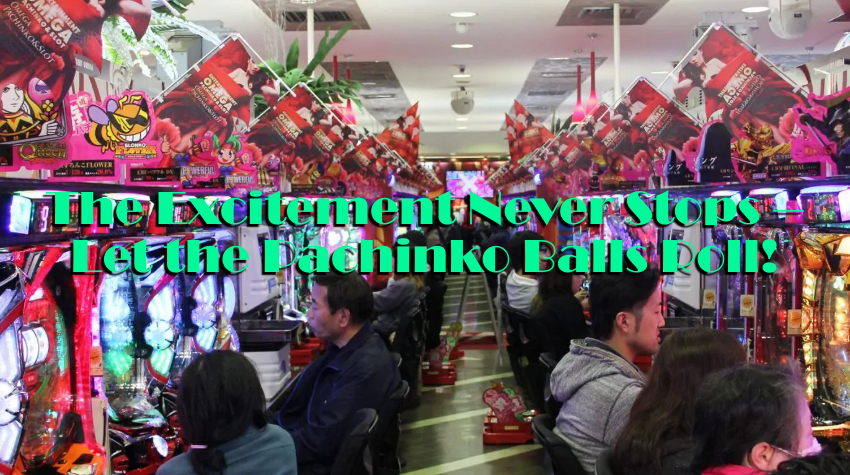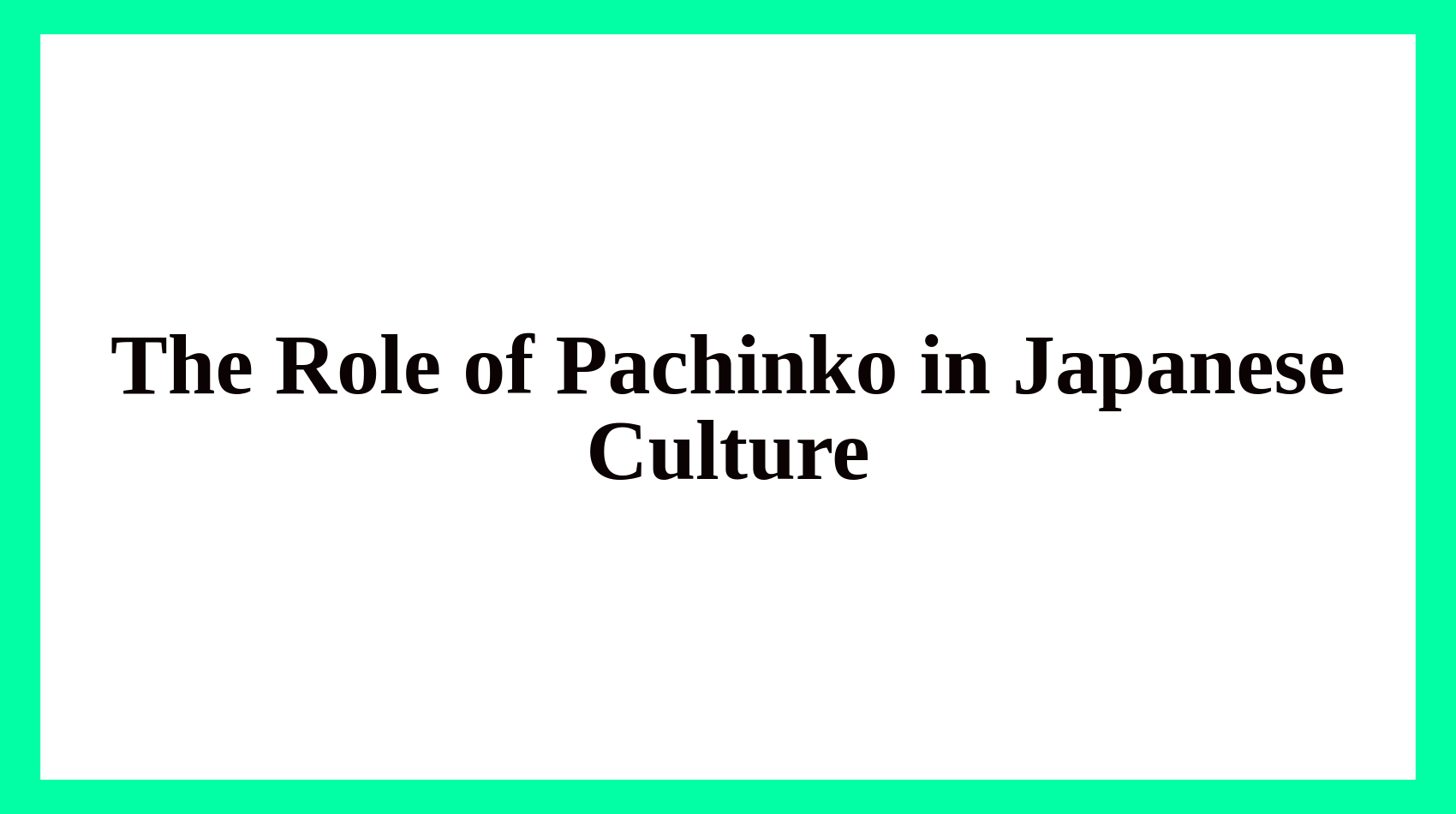Introduction: More Than Just a Game of Chance
Walk down any street in Tokyo, Osaka, or Nagoya, and you’ll eventually hear the unmistakable ding-ding-ding sound echoing from rows of glowing parlors. This vibrant energy is the heartbeat of Pachinko in Japanese Culture—a pastime that has become more than just a game. To outsiders, pachinko might look like a mix between pinball and slot machines, but in Japan, it represents a symbol of resilience, innovation, and national identity. Over the decades, pachinko has grown from a humble children’s toy into a multi-billion-yen industry, shaping not only Japan’s entertainment landscape but also its modern social fabric. In this guide, Casino Savvy explores how this unique game became one of Japan’s most enduring cultural icons.
If you’re new to pachinko, it’s worth first understanding its mechanics and origins here:
👉 What Is Pachinko?
The Origins of Pachinko
From Children’s Game to National Pastime
Pachinko’s story begins in the 1920s, inspired by a children’s mechanical toy known as the Corinth Game, imported from Europe. Early versions were small, hand-crafted devices where players shot steel balls onto a wooden board studded with pins.
After World War II, Japan’s economy and social fabric needed rebuilding. Entrepreneurs saw pachinko as a cheap, fun distraction for factory workers and city dwellers seeking relief. By the 1950s, pachinko parlors began to appear everywhere—initially simple stalls, later evolving into neon-lit entertainment hubs.
The Rise of Pachinko Parlors
By the 1960s and 70s, pachinko was firmly embedded in Japanese leisure culture.
- Postwar families viewed it as affordable entertainment.
- Employers used pachinko outings as informal bonding activities.
- Local communities often formed around popular parlors.
What started as a coin-operated hobby soon became an industry rivaling mainstream casinos worldwide.
Pachinko as a Reflection of Japanese Society
1. Discipline and Skill: The Art Behind the Game
Although pachinko might seem like a game of luck, seasoned players know that success requires discipline, timing, and focus—traits deeply embedded in Japanese culture.
Players learn to fine-tune the strength of the plunger, adjust the rhythm of their shots, and analyze the ball’s behavior as it bounces through the pins. This careful control mirrors Japan’s cultural values of precision, patience, and continuous improvement—the same ideals that define craftsmanship, martial arts, and tea ceremony traditions.
This pursuit of mastery embodies the concept of kaizen (改善)—the philosophy of gradual, consistent self-improvement.
Just as a calligrapher perfects each brushstroke, a dedicated pachinko player strives to improve subtle techniques over time. The satisfaction doesn’t just come from winning, but from the process of refinement, a value that resonates strongly with the Japanese mindset.
In this way, Pachinko in Japanese Culture represents more than entertainment—it reflects an appreciation for practice, resilience, and grace under pressure.
2. Work-Life Balance and Stress Relief: A Modern Escape
Japan’s work culture is famously intense. Long hours, social expectations, and urban congestion often leave workers seeking moments of escape. Pachinko parlors serve that purpose perfectly.
After a demanding day, salarymen and office workers step into brightly lit halls, where the hum of steel balls and flashing lights provide instant detachment from the rigid order of daily life.
For many, pachinko is a form of meditation through noise.
The immersive soundscape and hypnotic motion allow players to clear their minds, focusing on the simple act of launching and watching balls fall.
This sense of flow—being fully present in the moment—offers psychological relief similar to mindfulness practices.
Moreover, pachinko breaks social boundaries. Inside a parlor, the distinctions between rank and class disappear. Factory workers, executives, students, and retirees sit side-by-side, united by the same rhythm of play.
In that sense, pachinko represents an egalitarian microcosm of Japan—where hierarchy gives way to shared experience.
3. Technology and Innovation: Japan’s Obsession with Perfection
No other game captures Japan’s love for technological craftsmanship quite like pachinko.
From its mechanical origins to today’s digital era, the game has evolved alongside Japan’s broader journey from postwar recovery to tech superpower.
Modern pachinko machines are marvels of engineering:
- High-definition LCD displays featuring anime or cinematic storylines that engage players emotionally.
- Sensor-based scoring systems that track precision and reward skillful shots.
- Digital wallets and QR-code payments, reflecting Japan’s move toward a cashless society.
- Complex jackpots and light sequences synchronized with sound design to create theatrical excitement.
This seamless fusion of nostalgia and innovation transforms pachinko into a multisensory experience—one that celebrates both tradition and progress.
It’s no exaggeration to say that pachinko machines represent Japan’s design philosophy in miniature form: efficient, imaginative, and emotionally resonant.
Economic and Social Impact of Pachinko
A Multi-Billion-Yen Industry
Beyond its cultural and emotional appeal, pachinko is a major economic powerhouse.
At its height, the industry generated approximately ¥15 trillion (about US $100 billion) annually—rivaling or even surpassing some of Japan’s biggest sectors like automotive manufacturing and consumer electronics.
There are more than 7,000 pachinko parlors spread across Japan, ranging from small local venues to sprawling entertainment complexes with cafés, lounges, and attached convenience stores.
This ecosystem sustains a wide network of jobs:
- Designers and engineers developing the machines.
- Manufacturers and distributors handling parts and logistics.
- Frontline staff and technicians maintaining parlors and ensuring compliance.
The sheer scale of this workforce shows how deeply Pachinko in Japanese Culture is woven into the country’s economic fabric. It’s not merely recreation—it’s a livelihood for hundreds of thousands.
Regional Employment and Tourism
While urban centers like Tokyo and Osaka boast massive pachinko districts, the industry’s heart often beats strongest in regional Japan.
In prefectures such as Aichi, Fukuoka, and Hokkaido, pachinko provides stable employment and community activity, supporting towns where other industries may have declined.
Some local governments even promote “pachinko tourism”, where visitors experience traditional gaming culture alongside local cuisine and attractions.
International travelers intrigued by Japan’s pop culture often visit pachinko parlors as cultural landmarks—just as they might visit shrines, ramen shops, or anime districts like Akihabara.
This blend of entertainment and heritage makes pachinko both a cultural export and a tourism asset, bridging Japan’s domestic identity with global curiosity.
A Hidden Tax Contributor
Though rarely discussed publicly, pachinko contributes significantly to Japan’s fiscal system.
The industry generates billions of yen annually through:
- Business taxes and licensing fees.
- Employment income taxes from parlor staff and manufacturers.
- Municipal taxes and regulatory compliance costs.
These funds support urban infrastructure, community welfare programs, and public safety initiatives.
Even though pachinko operates within a semi-regulated legal framework, its economic impact on local and national levels remains undeniable.
For many municipalities, especially smaller cities, pachinko represents a steady source of tax revenue that sustains community projects and revitalization efforts.
It’s a subtle but important reminder that Pachinko in Japanese Culture isn’t just about leisure—it plays a tangible role in the nation’s financial ecosystem.
Cultural and Economic Duality
Pachinko stands at a fascinating crossroads between art, industry, and identity.
Culturally, it mirrors Japan’s values of diligence, creativity, and balance. Economically, it sustains entire sectors and influences regional development.
This duality—being both a pastime and an industry—makes pachinko unique in global gaming culture. It’s not just a form of recreation; it’s a reflection of how Japan merges discipline, design, and emotional connection into every aspect of its society.
Pachinko and Japan’s Gambling Laws
How Pachinko Operates Legally
Japan’s criminal law technically bans most forms of gambling. So how does pachinko thrive legally?
The answer lies in a unique legal loophole.
When players win balls, they exchange them for non-cash prizes inside the parlor—often chocolates, trinkets, or special tokens.
These tokens can then be taken to a separate, independently operated exchange booth nearby, where players receive cash.
Since the transaction happens outside the parlor, pachinko avoids classification as gambling. This clever system—known as “san-ten kō” (three-store method)—keeps pachinko within Japan’s legal gray area.
Government Regulation
The industry is heavily monitored by the National Police Agency (NPA), which issues strict guidelines on:
- Machine design and payout ratios.
- Player protection and anti-addiction measures.
- Ethical advertising standards.
Each machine must pass government inspections before installation, ensuring compliance and fairness.
Pachinko’s Cultural Symbolism
A Mirror of Modern Japan
Pachinko embodies Japan’s duality of tradition and modernity—rooted in mechanical craft yet infused with digital entertainment.
It stands as both a pastime and a metaphor for Japan’s postwar recovery: precise, industrious, and endlessly innovative.
Pachinko and Media Influence
The cultural footprint of pachinko extends far beyond parlors.
- Anime and manga often depict characters playing pachinko to symbolize luck or escapism.
- Films and literature (notably Min Jin Lee’s Pachinko) explore how the game intertwines with identity, social class, and migration.
- Music videos and advertisements use pachinko imagery to evoke nostalgia and energy.
Through these cultural channels, pachinko remains a shared visual and emotional experience among Japanese people.
The Design and Atmosphere of Pachinko Parlors
1. Sensory Immersion
Stepping into a pachinko hall is an assault on the senses—in the best way possible.
Rows of glowing machines create an ambient buzz, while the symphony of clattering balls and electronic jingles builds an atmosphere of excitement and focus.
This immersive environment appeals to the Japanese concept of “flow”, where total concentration becomes meditative.
2. Social Spaces
While the activity itself is solitary, pachinko parlors serve as social hubs. Regulars often chat between games, share tips, or greet familiar staff. Elderly players find companionship and routine here, giving the halls a subtle community function.
Pachinko as an Art Form
Design Aesthetics
Pachinko machines are meticulously designed works of art.
Manufacturers like Sankyo, Heiwa, and Sanyo Bussan integrate visual storytelling with Japanese pop culture—featuring anime heroes, samurai themes, or fantasy worlds.
Every machine tells a mini-narrative, combining gaming with visual art—a concept that appeals to Japan’s deep appreciation for craftsmanship and design harmony (monozukuri).
Symbolism of Sound and Motion
Sound design plays a key role in player psychology. The rhythmic clinks of steel balls, celebratory jingles, and jackpot melodies build anticipation, creating a theatrical rhythm that keeps players emotionally engaged.
In this way, pachinko transcends gambling—it becomes a performance art blending music, visuals, and movement.
The Social Debate: Pachinko’s Controversies
1. Addiction and Regulation
Despite its popularity, pachinko faces scrutiny for its addictive nature. Continuous flashing lights and near-miss sound effects stimulate dopamine responses similar to casino slots.
The Japanese government and NPA have introduced responsible gaming initiatives, including:
- Limits on jackpot frequency.
- Warnings about excessive play.
- Self-exclusion systems and counseling hotlines.
2. Economic Dependence
Some critics argue that rural towns rely too heavily on pachinko taxes and jobs, risking over-dependence on a single industry.
Yet others see pachinko as a necessary cultural industry—one that supports livelihoods while providing affordable leisure to millions.
Pachinko’s Modern Evolution
1. The Digital Shift
As technology advances, pachinko is embracing digital transformation. Many parlors now feature:
- Smartphone integrations for loyalty programs.
- Cashless transactions using prepaid IC cards.
- Hybrid pachislot machines, combining slot reels with pachinko gameplay.
2. The Rise of Online Pachinko
New online platforms allow players to enjoy pachinko simulations from home or mobile devices, preserving the excitement while promoting responsible limits.
This transition mirrors Japan’s broader tech trend: blending tradition with modern convenience.
Pachinko and Global Perception
Cultural Export
Though deeply Japanese, pachinko’s influence has spread internationally. Pachinko-style games appear in:
- Korean and Taiwanese arcades.
- Western online slot games that mimic pachinko mechanics.
- Japanese pop-culture expos showcasing vintage machines as collectible art.
Symbol of Identity
For many Japanese expatriates, pachinko remains a nostalgic link to home—a reminder of neon streets, convenience stores, and the hum of everyday Japan.
The Future of Pachinko
1. Sustainable Entertainment
The industry is exploring eco-friendly innovations, such as:
- Energy-efficient LED lighting.
- Noise-reduction systems.
- Recyclable machine components.
These changes aim to modernize pachinko while reducing its environmental footprint.
2. Cultural Preservation
As Japan faces an aging population and declining parlor attendance, preserving pachinko’s heritage has become a priority.
Museums and exhibitions now document its history, ensuring future generations understand its role in shaping modern Japan.
Conclusion: Pachinko—Japan’s Living Cultural Icon

\ The Excitement Never Stops – Let the Pachinko Balls Roll! /
Pachinko is more than a game—it’s a mirror of Japanese life.
It reflects the nation’s craftsmanship, emotional rhythm, and balance between order and chance.
From postwar alleys to futuristic gaming halls, pachinko’s journey embodies Japan’s adaptability, creativity, and cultural endurance.
For casino enthusiasts and cultural explorers alike, understanding pachinko offers insight into Japan’s heart: a place where technology meets tradition, and play meets philosophy.
To explore more guides about Japan’s gaming heritage and online casino insights, visit Casino Savvy—your trusted source for casino tips, cultural guides, and responsible gaming information.









Comments